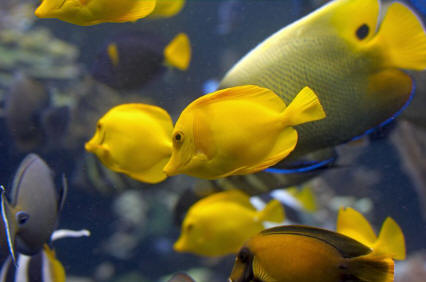Fire Mouth Cichlid

|
Scientific Name: Thorichthys meeki Price: Upon Request Origin: Central America Family: Cichlidae NOT AVAILABLE NOW |
|
Other Names: Firemouth Cichlid, Thorichthys meeki, Cichlasoma meeki |
|
Technical Info
Temperature: 23 - 26 ℃
pH: 6.5 - 8
GH: 4 - 20
Max size: 15 cm
Min Tank size: 100 Ltr
Position in Aqua: No special swimming level
Description
The Fire Mouth Cichlid is a beautiful cichlid that is somewhat territorial, especially during spawning. Their background color is a pearlescent turquoise-blue with red edging the scales. The throat and breast are red in color, ranging from a brick shade to a fiery red. There is a series of black marks running along the body, starting behind the eye, extending to the base of the caudal fin. The membranes of the fins have turquoise spots and the dorsal fin is edged in red. The pelvic and anal fins are edged in black. They form pairs, make a nuclear family and are excellent parents.
Food
Since they are omnivorous the Firemouth Cichlid will generally eat all kinds of flake, fresh, and live foods. To keep a good balance give them a high quality flake food or pellet everyday. Feed brine shrimp (either live or frozen) or blood worms as a treat.
Breeding
This species is easy to breed. They are substrate breeders that lay their egg and fry on an in advanced cleaned flat surface, usually a rock. The females guards the eggs while the male kepp other fishes out of their breeding territory. The fry can be feed newly hatched Brine Shrimp.
Compatible with
Cichlasomines, other South American cichlids, Loricarids, smaller Pimelodids, large Characins, Hemichromis, Tilapia. Avoid other Thoricthys species as the fish will readily hybridize.
Note
The Firemouth Cichlids can be a good community fish and are not usually aggressive except when spawning. They should be kept with similar sized tankmates. In a large tank several pairs can be kept. They are monogamous and will pair off, developing a strong nuclear family. They get territorial when spawning and also may burrow, damaging plants at that time. They are, however, very good parents.

